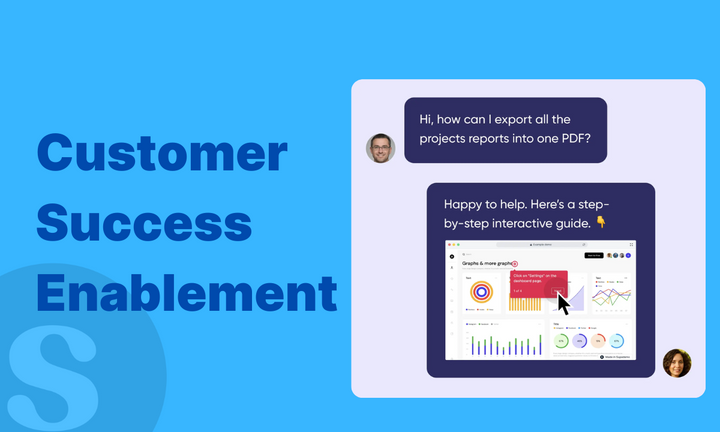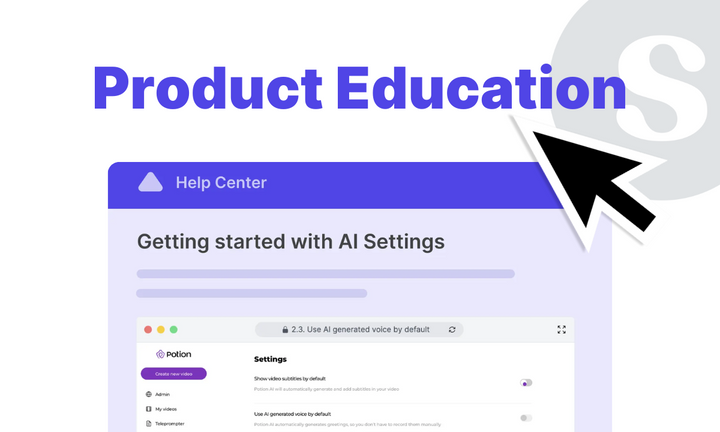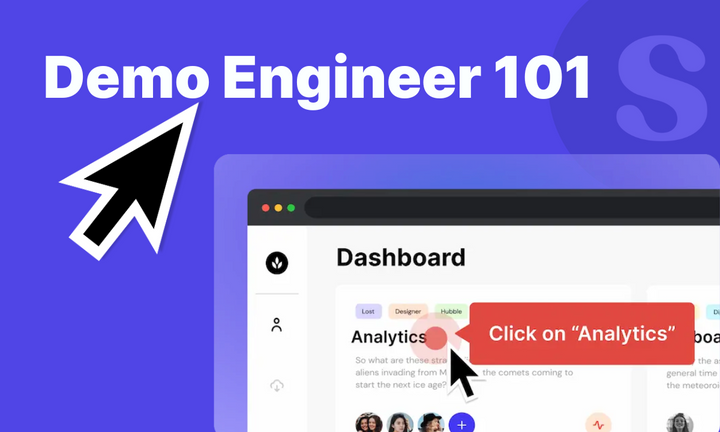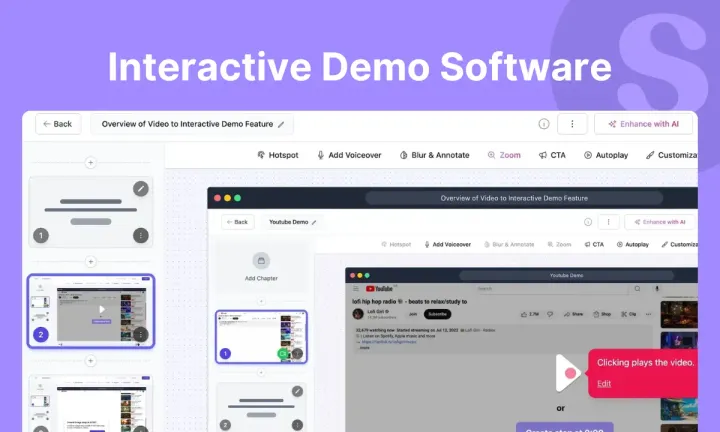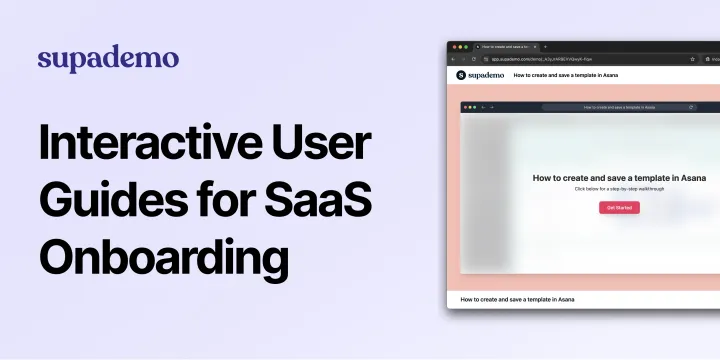Let's go on a customer-centric adventure as we unveil the core ingredients of a successful training program. From understanding your customers' needs to delivering exceptional content through user-friendly platforms, this article reveals the essential steps to crafting a training strategy to captivate and empower your valued audience.
By emphasizing the value and accessibility of your training materials, you can enhance your overall strategy, reduce customer churn, and foster a sense of loyalty among your customer base.
Before diving into the specifics of designing a training strategy, let's first recognize the significance of customer education.
Customer training is not a novel concept—it has been an integral part of sales for a long time. Whenever a new product or idea emerges, educating customers about its functionality and usage is imperative.
Education can take various forms, from user manuals commonly found with electronic devices to online customer training programs. Customer training can even be offered free, and platforms like Systeme.io enable the creation of customer training membership sites.
Here are different types of customer training:
1) Instructor-led training
This interactive training approach facilitates knowledge sharing among team members and promotes high levels of employee engagement. It helps employees develop soft skills to enhance their customer service abilities.
However, instructor-led training may not be ideal for small groups with diverse skill sets. Training materials for this method can include PowerPoint slides, whiteboards, and manuals.
2) Webinars
Webinars are suitable for large groups and are particularly beneficial for training participants spread across different locations. They offer convenience as they can be recorded and watched later, accommodating individuals with busy schedules.
Webinars eliminate the need for a central venue and travel expenses, making them a cost-effective option. The main drawback is the potential for lag time.
3) E-learning training programs
Online training programs can be tailored to any group size, requiring less time and resources for setup. These programs allow training to be conducted anywhere with an internet connection.
However, employee motivation may be lower for e-learning programs since participants have to follow the program at their own pace. Most e-learning materials are available in formats such as PDFs or videos.
Customer training plays a pivotal role in helping customers navigate the complexities of B2B products and contributes to the growth of B2B marketing.
There are numerous benefits to customer education, such as increasing product awareness and serving as a significant market differentiator.
Note: Developing a customer training program requires time and financial investment. Nevertheless, satisfied customers are more likely to recommend your business to others, leading to increased revenue. If you have budget limitations, websites like TGL can help you connect with lenders to secure a business loan.
Here's how you can optimize your training program:
Step 1. Understand your customers

Have you ever encountered a product manual that is difficult to comprehend? All you wanted was to understand how to use the product, but the manual fell short.
On the other hand, some manuals provide instructions in an overly simplistic format targeted at young children. It is essential to strike the right balance and avoid creating content that is either too complex or too basic.
The key lies in understanding your customers, their educational background, and their familiarity with your products. You can even schedule appointments with them to facilitate this process.
If you cater to multiple markets, it is advisable to create multiple versions of your training program to suit each audience.
Customer education, in its simplest form, creates an environment that helps your audience make informed purchasing decisions.
Different audiences have distinct mindsets and explore various purchasing options. Aligning your training program with different segments leads to higher customer retention.
In the pursuit of becoming a multinational business with substantial revenue, it is crucial to view people not just as consumers but also as human beings. Building a strong brand hinges on providing excellent customer experiences.
For instance, if your embroidered clothing, t-shirt, or other fashion website lacks a customer-centric approach and a favorable returns policy, it is unlikely to thrive. Part of this puzzle involves creating a well-defined buyer persona.
Imagine your customers in your mind, connect their behaviors and situations with their faces, and sketch personas based on this information. Set boundaries based on the different solutions you offer and keep the range focused.
Step 2: Set smart goals and emphasize content value

Once you have established your foundational strategy, it is time to identify smart goals.
Your customer training program should not resemble an academic course. While some theoretical background may be necessary for customers to understand your product or service, your primary focus should be on providing valuable knowledge regarding product usage.
These goals create a clear path that aligns with your available resources.
Consider the following questions when designing your customer training strategy:
- Do you want your audience to become proficient in using your products?
- Do you aim to foster a knowledge-rich environment?
- Do you want to tailor your learnings to specific interests?
- Are you planning to offer segment-specific learning opportunities?
Step 3: Make the content engaging to read

Training content can go beyond being merely informative—it can be interesting as well.
Many companies strive to create engaging employee training programs, but this effort often falls short when it comes to providing a captivating learning experience for customers.
For instance, TakeFlight has curated a comprehensive handbook filled with practical examples to help travelers navigate through the complexities of booking affordable flights and accommodations.
There are multiple ways to educate customers without overwhelming them with lengthy blocks of text. Consider the following techniques:
- Use a light and fun tone, incorporating emojis if appropriate.
- Get straight to the point and include only essential information.
- Avoid lengthy and convoluted text (consider leveraging an AI writer to streamline the text).
- Incorporate gamification elements if your learning management system (LMS) supports it.
- Utilize interactive presentation makers or video presentation tools to create engaging and memorable learning experiences.
- Create videos that captivate and provide valuable learning experiences for your customers.
- Who said completing customer training couldn't be valuable and fun?
Remember, a brand evolves based on customer needs. Keep the buyer's journey in mind, as brands are built on fulfilling those needs. By keeping your customer's journey at the forefront, you'll have satisfied customers endorsing their positive experiences learning with you.
Step 4: Employ the appropriate platform to cater to diverse audiences.

To cater to the unique training needs of different target groups, it is essential to leverage the appropriate platform. For instance, SkillPro provides a versatile learning ecosystem that empowers users with progress tracking, personalized feeds, flexible self-paced learning modules, and AI-powered chatbots for instant support.
For instance, if your customers are HVAC learners, it is essential to have a course that provides detailed training for the HVAC license exam. Similarly, if you offer more complex tools like Microsoft Dynamics eCommerce, providing adequate training for customers in that area is vital.
Consistently engaging training programs create a personalized experience, acknowledging the diverse needs of customers throughout the learning journey.
Here are the key features a versatile platform should offer:
- Self-paced learning environment accessible from any device with ease of use.
- The ability to create customized course content and track progress.
- Localization of content in different languages for a diverse learning platform.
- Seamless integration with mobile and tablet-based learning.
Step 5: Provide support

During the learning process, people may have questions that were not covered in the training modules. A well-designed customer training experience should always be accompanied by adequate support, including a responsive support team.
Web-based forums often serve as a useful tool, allowing users to ask questions and access a permanent record of discussions.
A good LMS can make a significant difference, transforming a mediocre customer training experience into an exceptional one. With an intuitive platform, creating, formatting, and updating educational content becomes easier and more reliable.
Most LMS platforms provide real-time insights and historical data on training statistics and usage. They also offer features such as integration with webinars and gamification options, enabling a more engaging training program. Tests and quizzes can be added to assess learners' progress, while surveys help gather valuable feedback from customers. Furthermore, certificates and commercial training certifications allow you to monetize your product training.
A learning management system serves as your software companion in the realm of e-learning. Consider the following benefits:
- It acts as a connecting hub for teammates and customers.
- It provides easy access to data and analytics.
- Platforms like Supademo can auto-generate step-by-step guides with written instructions and annotated screenshots, making it effortless to create training materials. These guides can be edited, stored, shared, or embedded in your preferred platform.
- Additionally, platforms like Supademo offer the ability to combine step-by-step guides with images, and more. This allows you to build templates and visual process documentation to strengthen customer onboarding, upskill your customer service team, create internal and external standard operating procedures (SOPs), and develop a robust customer-facing knowledge base.
Conclusion: Assess the effectiveness of your training
Finally, it is essential to test the impact of your training efforts.
Delivering valuable content to your audience is one thing, but it is equally important to ensure they are extracting maximum value from it. Conduct surveys to understand how helpful the content is to your customers.
Customer training is a necessity in certain industries. It serves as a means to attract customer attention and delight the audience.



